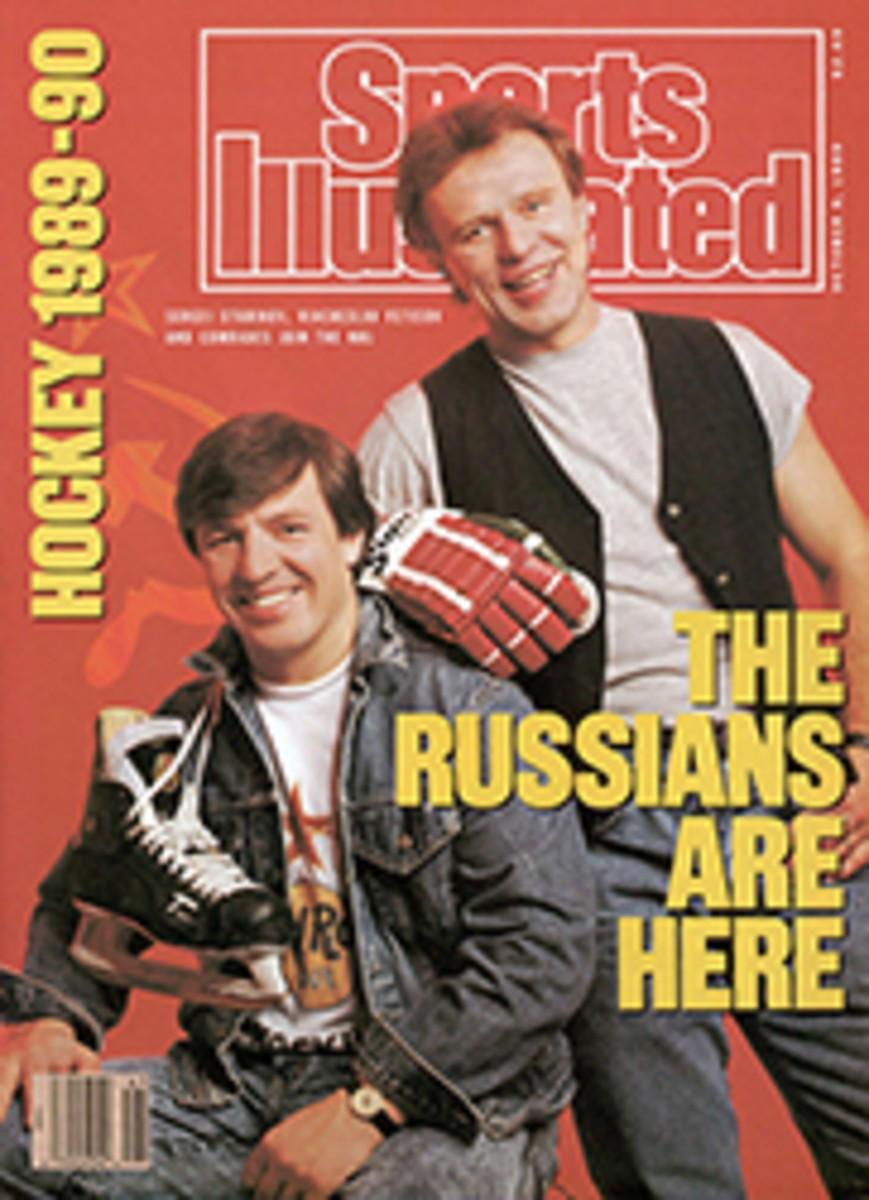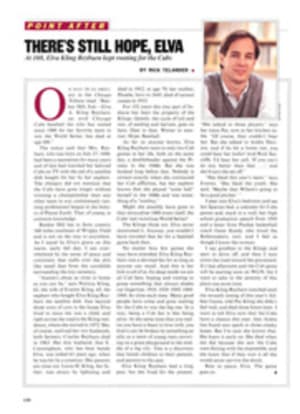
THE TOPPS BIDS WERE OUT OF SIGHT
"Three hundred...three-fifty...four hundred dollars." The auctioneer's chant becomes a kind of elegy for the kid next door who buys packs of bubblegum cards with pocket change. "Thirty thousand...thirty-five thousand.... Do I hear forty thousand dollars?" Unless the kid next door happens to be Malcolm Forbes.
On this August afternoon Guernsey's, a Manhattan auction house, is selling the archives of Topps, the Brooklyn-based confectioner that is best known for selling baseball cards with its gum. On the block is everything from color transparencies of baseball-card photos to a drawing used for a Felix Mantilla rub-on baseball tattoo, from canceled checks to bound volumes of hockey cards, from Wacky Packages sticker art to original sketches for Bazooka Joe comic strips ("Herman and Mort Discuss Food," "Pesty Questions Life," etc.).
"We had 35 years of terrific one-of-a-kind stuff in our files that the public had never seen," says Norman Liss, a Topps spokesman. "Rather than let it disintegrate, we decided to offer it to collectors."
The memorabilia has drawn several thousand to the Hunter College gym during the two exhibition days before the auction. A few hundred turn out to be serious bidders. They don't seem to be driven much by nostalgia.
"It's like an archaeological dig." says Keith Olbermann, a Los Angeles TV executive whose collection of baseball cards runs to about 50,000. "I'm buying things I've only heard whispers about."
He winds up spending $12,000, mostly for uncut proof sheets that contain cards with felicitous errors and such never-issued gems as the 1977 card of Gary Matthews in a Giants uniform (he signed with the Braves as a free agent that year) and the '80 card of Andy Messersmith wearing an Angels uniform (if you don't remember what happened to Messersmith, you can look it up).
A painting of Sammy Baugh for a 1952 Bowman football card—Bowman was a chewing-gum and sports trading-card manufacturer that Topps bought out in 1955—fetches $6,000. A letter from Carl Yastrzemski's father, in which he turned down a contract with Topps until his son made the majors, goes for a relatively down-to-earth $605. Mickey Mantle's first exclusive contract with Topps brings $17,600; one of his number 7 jerseys is apparently worth $33,000. Two canceled checks signed by Mantle are sold for $2,475, and his 1960 Topps contract extension hauls in another $1,045.
"In terms of lunacy, Mantle collectors are slightly ahead of Rotisserie Leaguers," says Olbermann. "You mention the Mick and their hearts pump double-time as they reach for their wallets."
The big-ticket items from the cache are six three-by five-inch paintings of Willie Mays, Bob Feller, Roy Campanella, Whitey Ford. Jackie Robinson and Mantle, used for Topps's baseball cards in 1953, the only year paintings were used instead of photos. The glossy 196-page catalog prices them from $2,000 to $10,000. But auction buzz puts their true worth at only slightly less than van Gogh's Sunflowers, even though they are unsigned. (The portraits were painted by a number of artists, and Topps has no record of who painted which ballplayer.)
"My buddy's going to buy Mantle," says the friend of a Marlboro, Mass., coin dealer.
How much is he prepared to spend?
"Didn't you hear me, pal?" he says. "I said, he's going to buy Mantle. He's got a $2 million line of credit. If he wants something, it's his."
Marlboro Man's chief rival turns out to be Matt Jones, a well-tailored gent who sports blue suspenders and gold cuff links. He's not an investment banker from Tokyo but rather the director of bar-system and lounge standards for Marriott Hotels. Jones says he hopes to display the paintings, which he deems "important," around the country at the chain's sports saloons. He snaps up Mays for $88,000, which includes a 10% buyer's fee. But what the heck, it's one of a kind.
Marlboro Man strikes back by grabbing Ford ($35,200), Feller ($33,000) and Campanella ($16,500). A slender, dark-haired fellow who buys Robinson for $78,100 appears pleased, but he doesn't want to talk about the purchase. Middle-aged men who pay more than 78 grand for a painting that appears on a baseball card don't always like to see their names in print.
When Mantle comes up for sale, auctioneer Joann Grant's voice takes on a rhythmic urgency as she encourages the bidders: "Twenty thousand...and I have 21,000 bid against the room...25,000.... I have 50,000 at the front...at 70,000...75,000 up front...and 80,000.... I hear 85,000...90,000. Do you care to bid?"
Marlboro Man does. Everyone else gasps. Everyone but Marriott Man, who raises him $5,000. Marlboro Man sees him another $5,000. "Do I hear 110,000?" asks Grant. Marriott Man holds up his card. She looks at Marlboro Man and says, "One hundred and fifteen? Do you care to bid?" Marlboro Man sighs and snuffs himself out. "One hundred and ten is the bid." Bang. "One hundred and ten thousand dollars takes it."
Marlboro Man shakes his head in defeat while Marriott Man pumps his fist in the air. "Marriott buys Mays and Mantle," he says. "Nifty alliteration, isn't it?"
Olbermann shrugs. "I can't believe this." he says. "For $110,000 he could have bought all Mantle's cards and paid him to sit in a lobby for a week."
At the end of the auction, Liss throws out a ballpark figure for the total take: $1.6 million. What's next, old bubble gum? "Come on," says Liss. "We sell that every day."
PHOTO
LANE STEWART
Jones shelled out $110,000 so Mantle could hang in Marriotts.
TWO PHOTOS
LANE STEWART
A coin dealer paid $35,200 for a painting of Ford (top); one of Robinson commanded $78,100.

